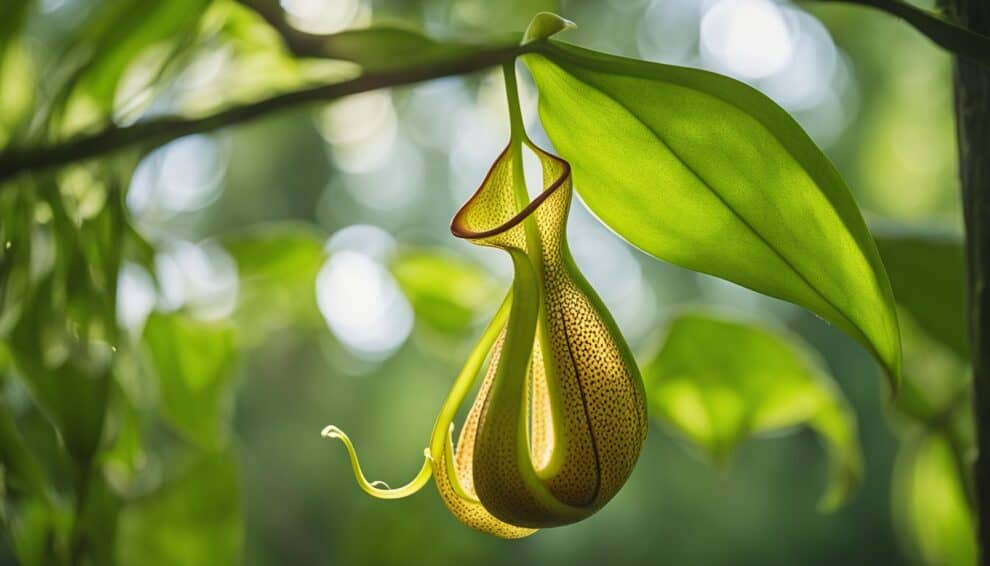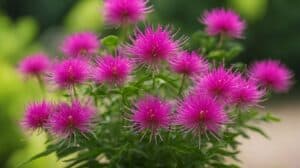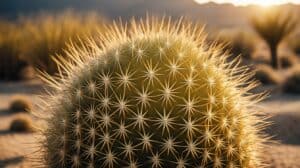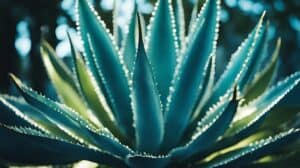Carnivorous plants, also known as insectivorous plants, have fascinated botanists and horticulturists for centuries. These plants have evolved to attract, trap, and digest insects and other small animals to supplement their nutrient requirements. One such carnivorous plant is the Pitcher Plant (Nepenthes alata) found in Southeast Asia. In this article, we will explore the propagation of Pitcher Plants through various methods.

Pitcher Plants are unique in their appearance, with a bulbous pitcher-shaped structure that acts as a trap for insects. The plant secretes a nectar-like substance that attracts insects, and once inside the pitcher, they are unable to escape due to the slippery walls and downward-pointing hairs. The plant then digests the insect and absorbs the nutrients, allowing it to thrive in nutrient-poor environments.
Propagating Pitcher Plants can be done through various methods, including seed germination, leaf cuttings, and stem cuttings. Each method has its advantages and disadvantages, and the success rate may vary depending on the species and environmental conditions. In the following paragraphs, we will explore each method in detail, outlining the steps required for successful propagation.
Understanding Pitcher Plants
Species Overview
Pitcher plants, also known as Nepenthes, are a group of carnivorous plants that are native to Southeast Asia, Madagascar, and Australia. There are over 170 species of pitcher plants, with varying sizes and shapes of pitchers. The Nepenthes alata, commonly known as the tropical pitcher plant, is one of the most popular species in cultivation due to its unique and attractive pitchers.
Carnivorous Mechanisms
Pitcher plants have evolved to attract, capture, and digest insects and other small prey. The pitchers are modified leaves that form a tube-like structure with a lid on top and a slippery surface on the inside. The lid of the pitcher acts as a trap, luring insects with nectar or bright colors. Once the insect lands on the slippery surface, it falls into the pitcher and is unable to climb out due to the downward-pointing hairs and slippery walls. The prey is then digested by enzymes secreted by the plant.
Natural Habitat
Pitcher plants are found in a variety of habitats, including rainforests, swamps, and high-altitude areas. They often grow in nutrient-poor soils, which is why they have evolved to become carnivorous. In their natural habitat, pitcher plants can grow to impressive sizes, with some species producing pitchers that are over a foot long.
Overall, pitcher plants are fascinating and unique plants that have evolved to thrive in nutrient-poor environments by becoming carnivorous. Understanding their natural habitat and carnivorous mechanisms is crucial for successful cultivation.
Propagation Techniques

Nepenthes alata, commonly known as the Pitcher Plant, can be propagated by seed germination, cuttings propagation, and tissue culture methods. Each method has its own advantages and disadvantages, and the choice of propagation technique depends on the grower’s preferences and the availability of resources.
Seed Germination
Seed germination is the most common method of propagating Nepenthes alata. The seeds are harvested from the mature pitchers and sown in a well-draining soil mix. The soil should be kept moist and warm, with a temperature range of 70-80°F. The seeds usually germinate within 2-3 weeks.
It is important to note that Nepenthes seeds have a short shelf life and should be sown as soon as possible after harvesting. Additionally, seed-grown plants may exhibit genetic variation, which can result in differences in pitcher shape, color, and size.
Cuttings Propagation
Cuttings propagation is a relatively easy and fast method of propagating Nepenthes alata. Stem cuttings are taken from the parent plant and rooted in a well-draining soil mix. The cuttings should be kept warm and moist, with a temperature range of 70-80°F. Rooting usually takes 2-3 weeks.
It is important to note that not all Nepenthes species can be propagated by cuttings. Nepenthes alata, however, is known to root easily from stem cuttings.
Tissue Culture Methods
Tissue culture methods are used to propagate Nepenthes alata on a large scale. This method involves the use of sterile techniques to grow plant cells in a nutrient-rich medium. Tissue culture allows for the production of large numbers of identical plants, with minimal genetic variation.
Tissue culture methods require specialized equipment and expertise, and are not practical for the average grower. However, tissue culture-grown plants are often more disease-resistant and have a higher survival rate than seed-grown or cutting-grown plants.
In conclusion, Nepenthes alata can be propagated by seed germination, cuttings propagation, and tissue culture methods. Each method has its own advantages and disadvantages, and the choice of propagation technique depends on the grower’s preferences and the availability of resources.
Caring for Young Pitcher Plants

Soil and Potting
When it comes to potting young pitcher plants, it is important to use a well-draining soil mix. A mixture of sphagnum moss, perlite, and coarse sand is a good option. Avoid using garden soil as it can cause the roots to rot due to poor drainage. The pot should have drainage holes to prevent water from accumulating at the bottom.
Watering Requirements
Young pitcher plants require consistently moist soil. Water the plant regularly, but avoid overwatering as it can cause the roots to rot. The frequency of watering will depend on the environment and the size of the pot. It is best to water the plant when the top inch of soil is dry to the touch.
Light and Temperature
Young pitcher plants need bright, indirect light to grow properly. They should be placed in a location that receives at least 6 hours of sunlight per day. However, direct sunlight can scorch the leaves, so it is best to place them in a spot where they can receive filtered light.
Pitcher plants prefer warm temperatures between 70-85°F during the day and 60-70°F at night. Avoid exposing the plant to temperatures below 50°F, as it can damage the plant.
Overall, caring for young pitcher plants requires attention to detail and a little bit of patience. By providing the right soil, watering, light, and temperature conditions, you can help your pitcher plant thrive.
Frequently Asked Questions

How do you propagate a carnivorous pitcher plant?
Propagating a carnivorous pitcher plant can be done through stem cuttings or leaf cuttings. Stem cuttings are taken from the mature plant and should be at least 4 inches in length. Leaf cuttings can be taken from a mature leaf and should include the petiole. Both types of cuttings should be planted in a well-draining soil mix and kept in a warm and humid environment until they root.
Can you root pitcher plant cuttings in water?
While some plants can be rooted in water, pitcher plants are not one of them. Pitcher plant cuttings should be planted in a well-draining soil mix and kept in a warm and humid environment until they root.
How do pitcher plants multiply?
Pitcher plants can multiply through vegetative propagation, which involves taking stem cuttings or leaf cuttings and rooting them to create new plants. They can also produce seeds, which can be collected and sown to grow new plants.
When is the best time to divide and replant a pitcher plant?
The best time to divide and replant a pitcher plant is in the spring when new growth begins to emerge. This allows the plant enough time to establish itself before the hot summer months.
What are the steps for propagating pitcher plants from cuttings?
To propagate pitcher plants from cuttings, follow these steps:
- Take stem or leaf cuttings from a mature plant.
- Plant the cuttings in a well-draining soil mix.
- Keep the cuttings in a warm and humid environment until they root.
- Once the cuttings have rooted, transplant them into individual pots.
Where can I find nepenthes cuttings for sale?
Nepenthes cuttings can be found for sale online or at specialty nurseries that carry carnivorous plants. It is important to purchase cuttings from a reputable source to ensure that they are healthy and disease-free.













